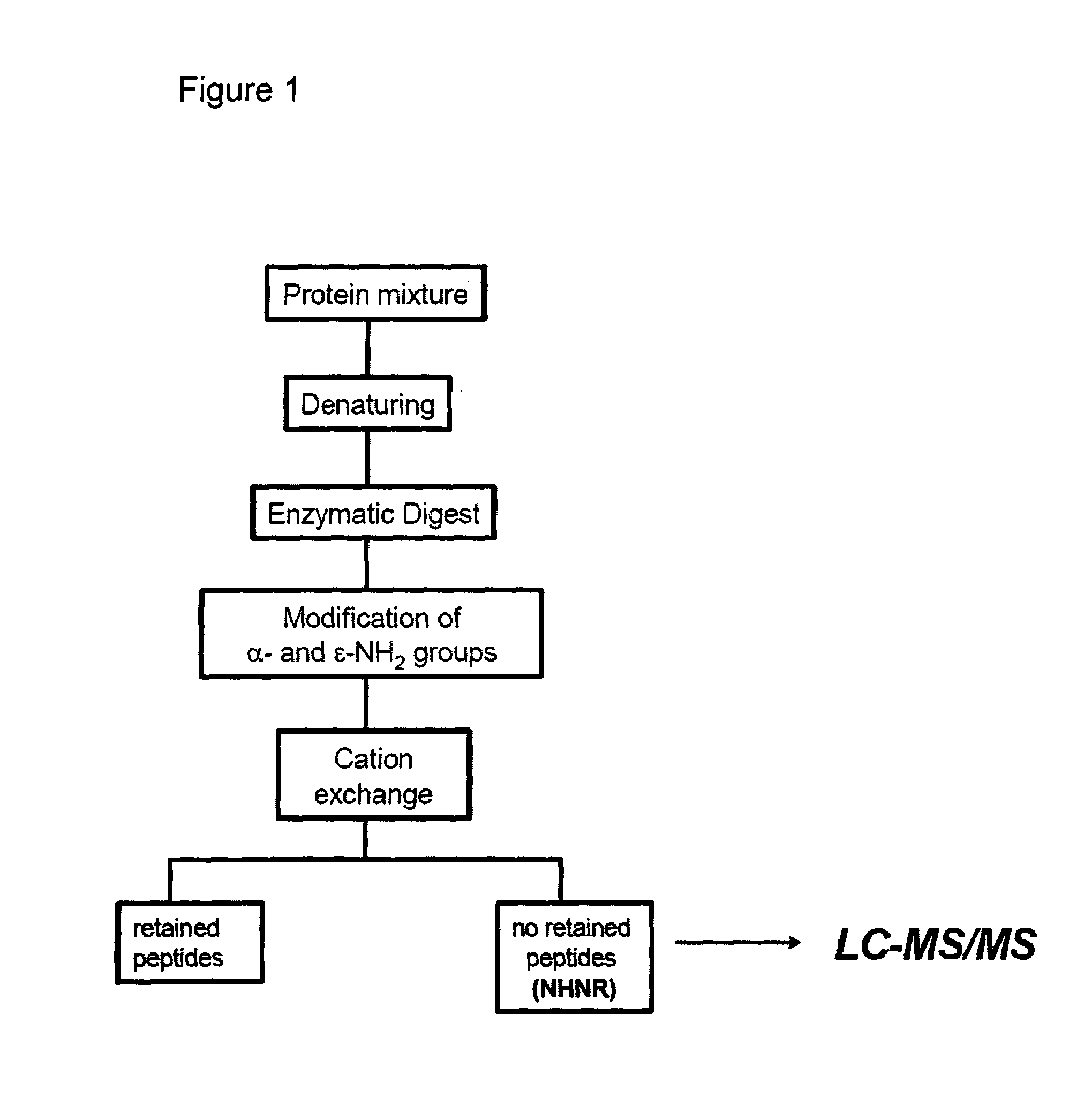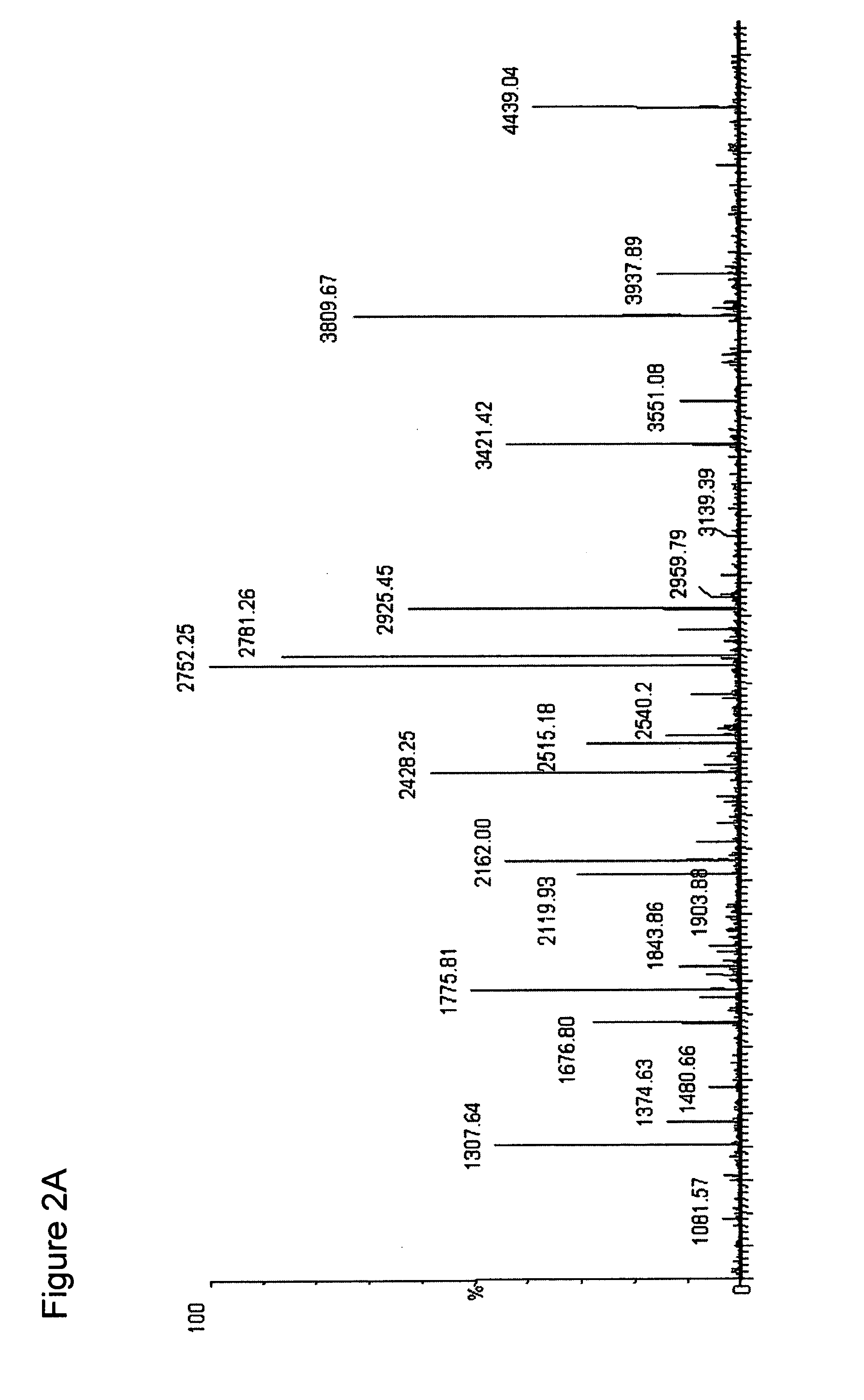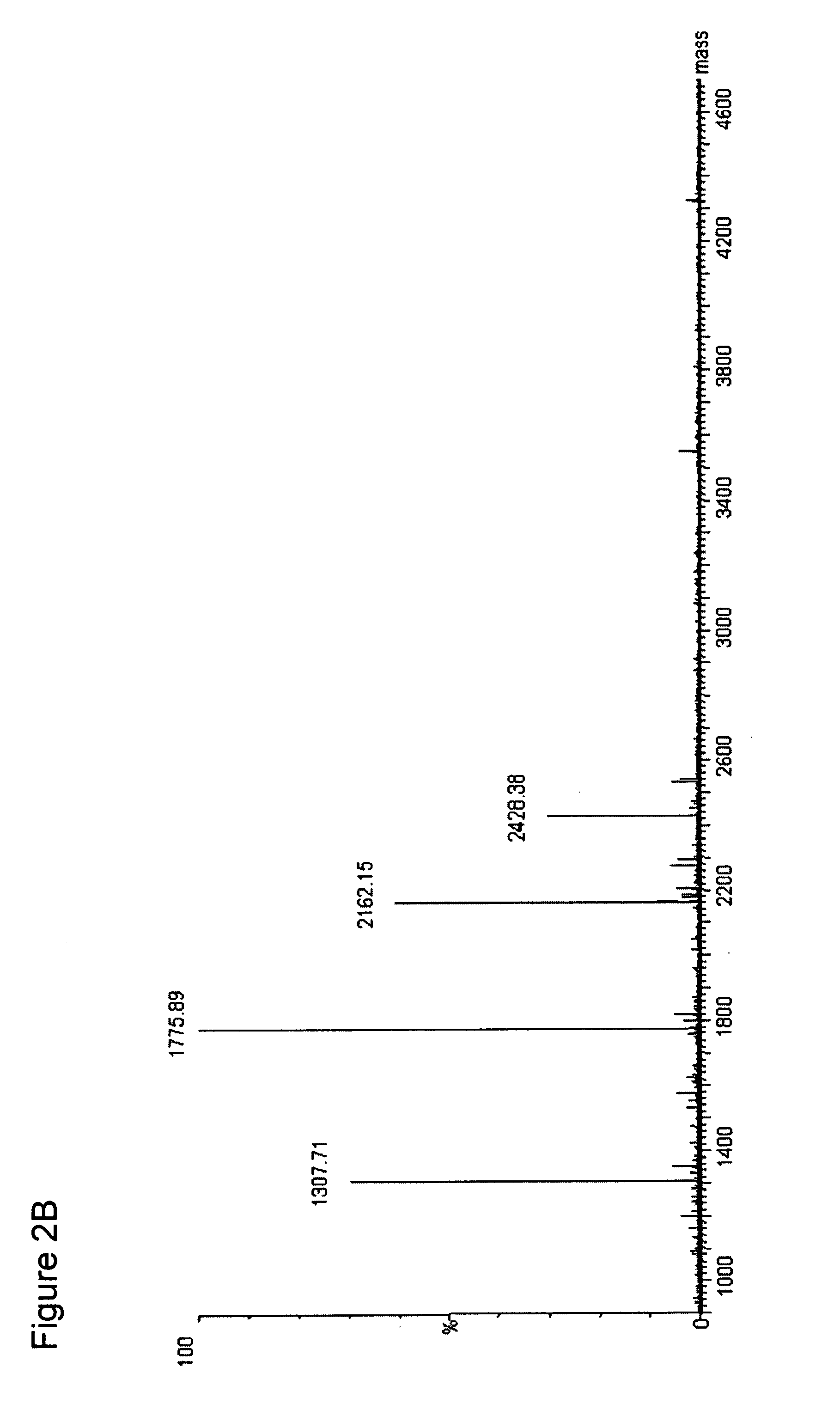Method of selective peptide isolation for the identification and quantitative analysis of proteins in complex mixtures
- Summary
- Abstract
- Description
- Claims
- Application Information
AI Technical Summary
Benefits of technology
Problems solved by technology
Method used
Image
Examples
example 1
NHNR Peptide Isolation from Recombinant Streptokinase
[0068]Recombinant streptokinase was subjected to the method shown in FIG. 1 according to the following steps. 1) Hydrolysis for 6 hours at 37° C. with trypsin in 0.1 M HEPES buffer,pH 8.6, urea 4M. 2) Citraconic anhydride was added in a 50 molar excess over amino groups. The reactions proceed for 15 min at 4° C. 3) Excess of reagent was removed by desalting of peptides by HPLC using a RP-C4 column (20×2.1 mm), and a solvent system consisting of solvent A: 0.05% TFA in water and solvent B: 0.05% TFA in acetonitrile. 4) Modified peptides were loaded onto a strong cation exchanger and the flow-through fraction was immediately collected. 5) Isolated peptide fraction was incubated for 12 hours at 37° C. in order to remove the citraconyl groups and further analyzed by mass spectrometry.
[0069]The ESI-MS of the entire digest of the protein is shown in the FIG. 2A. Subjecting the streptokinase digest to the NHNR peptide isolation procedure...
example 2
[0071]Identification of proteins present in a membrane extract from the Neisseria meningitidis bacteria using the selective isolation of NHNR peptides.
[0072]The Neisseria meningitidis bacteria culture was grown during 16 hours and after that it was centrifuged at 5000 g for 15 min. The biomass was extracted with a buffer solution consisting in 0.1 M Tris-HCl pH 8.5, 10 mM EDTA and 0.5% sodium deoxicolate during 30 min at room temperature with constant agitation. Then, it was centrifuged at 20000 for 30 min at 4° C. and the supernatant was collected. Another extraction step was conducted over the pellet with the same buffer solution as above. This sample and the previously collected supernatant were mixed and further ultracentrifuged at 125000 for 2 hours at 4° C. The pellet was dissolved in 50 mM Tris-HCl, 2 mM EDTA, 1.2% sodium deoxicolate and 20% sucrose and the solution was subjected to another ultracentrifugation step. Finally, the protein pellet was homogenized in solution cont...
example 3
[0076]Identification and relative quantification of the proteins components of the two mixtures (A and B) by the method of this invention.
[0077]The samples A and B where prepared with the proteins recombinant streptokinase, horse myoglobin and human alpha-2b interferon. The three proteins were mixed in a molar ratio of A respected to B of 1:1 for streptokinase, 1:2 for myoglobin and 1:4 for the alpha interferon. The isolation of NHNR peptides was achieved essentially as in the example 1, but for this case the enzymatic digestion with trypsin was carried out in the presence of normal water for the mixture A while the mixture B was hydrolyzed in presence of H218O. Both samples were mixed and the NHNR peptides were isolated according to the method of this invention.
[0078]The enzymatic labeling with 16O / 18O was chosen due to the increasing level of complexity that this labeling procedure may introduce. For instance, it does not produce enough separation between the mass signals to avoid...
PUM
| Property | Measurement | Unit |
|---|---|---|
| Composition | aaaaa | aaaaa |
| Concentration | aaaaa | aaaaa |
| Distribution | aaaaa | aaaaa |
Abstract
Description
Claims
Application Information
 Login to View More
Login to View More - R&D
- Intellectual Property
- Life Sciences
- Materials
- Tech Scout
- Unparalleled Data Quality
- Higher Quality Content
- 60% Fewer Hallucinations
Browse by: Latest US Patents, China's latest patents, Technical Efficacy Thesaurus, Application Domain, Technology Topic, Popular Technical Reports.
© 2025 PatSnap. All rights reserved.Legal|Privacy policy|Modern Slavery Act Transparency Statement|Sitemap|About US| Contact US: help@patsnap.com



